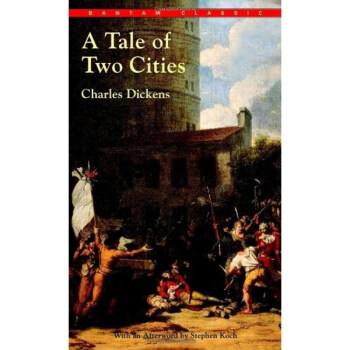![Tuesdays with Morrie相约星期二 英文原版 [平装]](https://pic.windowsfront.com/19041583/552338f4N3c61485a.jpg)

具体描述
编辑推荐
一个老人,一个年轻人,和一堂人生课。余秋雨教授推荐!《相约星期二》的作者是美国一位颇有成就的专栏作家、电台主持,步入中年以后虽然事业有成,却常常有一种莫名的失落感。一个偶然的机会,他得知昔日自己最尊敬的老教授身患不治之症,便前往探视,并与老教授相约每周二探讨人生。《相约星期二》的主要篇幅就是记述这些谈话的内容。最终,老教授撒手人寰,但作者却从他独特的人生观中得到了启迪,重新找到了生活的意义。《相约星期二》语言流畅,寓意深远,在美国的畅销书排行榜上名列前茅,且有可观的市场潜力。
内容简介
Maybe it was a grandparent, or a teacher, or a colleague. Someone older, patient and wise, who understood you when you were young and searching, helped you see the world as a more profound place, gave you sound advice to help you make your way through it.For Mitch Albom, that person was Morrie Schwartz, his college professor from nearly twenty years ago.
Maybe, like Mitch, you lost track of this mentor as you made your way, and the insights faded, and the world seemed colder. Wouldn't you like to see that person again, ask the bigger questions that still haunt you, receive wisdom for your busy life today the way you once did when you were younger?
Mitch Albom had that second chance. He rediscovered Morrie in the last months of the older man's life. Knowing he was dying, Morrie visited with Mitch in his study every Tuesday, just as they used to back in college. Their rekindled relationship turned into one final "class": lessons in how to live.
Tuesdays with Morrie is a magical chronicle of their time together, through which Mitch shares Morrie's lasting gift with the world.
这是一个真实的故事:年逾七旬的社会心理学教授莫里在一九九四年罹患肌萎性侧索硬化,一年以后与世长辞。作为莫里早年的得意门生,米奇在老教授缠绵病榻的十四周里,每周二都上门与他相伴,聆听他最后的教诲,并在他死后将老师的醒世箴缀珠成链,冠名《相约星期二》。
作者米奇·阿尔博姆是美国著名作家、广播电视主持人,对于他来说,与恩师“相约星期二”的经历不啻为一个重新审视自己、重读人生必修课的机会。这门人生课震撼着作者,也藉由作者的妙笔,感动整个世界。本书在全美各大图书畅销排行榜上停留四年之久,被译成包括中文在内的三十一种文字,成为近年来图书出版业的奇迹。
作者简介
Mitch Albom is an author, playwright, and screenwriter who has written seven books, including the international bestseller Tuesdays with Morrie, the bestselling memoir of all time. His first novel, The Five People You Meet in Heaven, was an instant #1 New York Times bestseller, as were For One More Day, his second novel, and Have a Little Faith, his most recent work of nonfiction. All four books were made into acclaimed TV films. Albom also works as a columnist and a broadcaster and has founded seven charities in Detroit and Haiti, where he operates an orphanage/mission. He lives with his wife, Janine, in Michigan.米奇·阿尔博姆(1959—),美国著名专栏作家,电台主持,电视评论员,此外还是活跃的慈善活动家。迄今为止,阿尔博姆已出版九部畅销著作,其中纪实作品《相约星期二》在全美各大图书畅销排行榜上停留四年之久,被译成包括中文在内的三十一种文字,全球累计销量超过两千万册,成为近年来图书出版业的奇迹。
精彩书评
"This is a sweet book of a man's love for his mentor. It has a stubborn honesty that nourishes the living."--Robert Bly, author of Iron John
"A deeply moving account of courage and wisdom, shared by an inveterate mentor looking into the multitextured face of his own death. There is much to be learned by sitting in on this final class."
--Jon Kabat-Zinn, coauthor of Everyday Blessings and Wherever You Go, There You Are
"All of the saints and Buddhas have taught us that wisdom and compassion are one. Now along comes Morrie, who makes it perfectly plain. His living and dying show us the way."
--Joanna Bull, Founder and Executive Director of Gilda's Club
临终前,他要给学生上最后一门课,课程名称是人生。上了十四周,最后一堂是葬礼。他把课堂留下了,课堂越变越大,现在延伸到了中国。我向过路的朋友们大声招呼:来,值得进去听听。
——余秋雨
前言/序言
The CurriculumThe last class of my old professor's life took place once a week in his house, by a window in the study where he could watch a small hibiscus plant shed its pink leaves. The class met on Tuesdays. It began after breakfast. The subject was The Meaning of Life. It was taught from experience.
No grades were given, but there were oral exams each week. You were expected to respond to questions, and you were expected to pose questions of your own. You were also required to perform physical tasks now and then, such as lifting the professor's head to a comfortable spot on the pillow or placing his glasses on the bridge of his nose. Kissing him good-bye earned you extra credit.
No books were required, yet many topics were covered, including love, work, community, family, aging, forgiveness, and, finally, death. The last lecture was brief, only a few words.
A funeral was held in lieu of graduation.
Although no final exam was given, you were expected to produce one long paper on what was learned. That paper is presented here.
The last class of my old professor's life had only one student.
I was the student.
It is the late spring of 1979, a hot, sticky Saturday afternoon. Hundreds of us sit together, side by side, in rows of wooden folding chairs on the main campus lawn. We wear blue nylon robes. We listen impatiently to long speeches. When the ceremony is over, we throw our caps in the air, and we are officially graduated from college, the senior class of Brandeis University in the city of Waltham, Massachusetts. For many of us, the curtain has just come down on childhood.
Afterward, I find Morrie Schwartz, my favorite professor, and introduce him to my parents. He is a small man who takes small steps, as if a strong wind could, at any time, whisk him up into the clouds. In his graduation day robe, he looks like a cross between a biblical prophet and a Christmas elf. He has sparkling blue-green eyes, thinning silver hair that spills onto his forehead, big ears, a triangular nose, and tufts of graying eyebrows. Although his teeth are crooked and his lower ones are slanted back--as if someone had once punched them in--when he smiles it's as if you'd just told him the first joke on earth.
He tells my parents how I took every class he taught. He tells them, "You have a special boy here." Embarrassed, I look at my feet. Before we leave, I hand my professor a present, a tan briefcase with his initials on the front. I bought this the day before at a shopping mall. I didn't want to forget him. Maybe I didn't want him to forget me.
"Mitch, you are one of the good ones," he says, admiring the briefcase. Then he hugs me. I feel his thin arms around my back. I am taller than he is, and when he holds me, I feel awkward, older, as if I were the parent and he were the child.
He asks if I will stay in touch, and without hesitation I say, "Of course."
When he steps back, I see that he is crying.
The Syllabus
His death sentence came in the summer of 1994. Looking back, Morrie knew something bad was coming long before that. He knew it the day he gave up dancing.
He had always been a dancer, my old professor. The music didn't matter. Rock and roll, big band, the blues. He loved them all. He would close his eyes and with a blissful smile begin to move to his own sense of rhythm. It wasn't always pretty. But then, he didn't worry about a partner. Morrie danced by himself.
He used to go to this church in Harvard Square every Wednesday night for something called "Dance Free." They had flashing lights and booming speakers and Morrie would wander in among the mostly student crowd, wearing a white T-shirt and black sweatpants and a towel around his neck, and whatever music was playing, that's the music to which he danced. He'd do the lindy to Jimi Hendrix. He twisted and twirled, he waved his arms like a conductor on amphetamines, until sweat was dripping down the middle of his back. No one there knew he was a prominent doctor of sociology, with years of experience as a college professor and several well-respected books. They just thought he was some old nut.
Once, he brought a tango tape and got them to play it over the speakers. Then he commandeered the floor, shooting back and forth like some hot Latin lover. When he finished, everyone applauded. He could have stayed in that moment forever.
But then the dancing stopped.
He developed asthma in his sixties. His breathing became labored. One day he was walking along the Charles River, and a cold burst of wind left him choking for air. He was rushed to the hospital and injected with Adrenalin.
A few years later, he began to have trouble walking. At a birthday party for a friend, he stumbled inexplicably. Another night, he fell down the steps of a theater, startling a small crowd of people.
"Give him air!" someone yelled.
He was in his seventies by this point, so they whispered "old age" and helped him to his feet. But Morrie, who was always more in touch with his insides than the rest of us, knew something else was wrong. This was more than old age. He was weary all the time. He had trouble sleeping. He dreamt he was dying.
He began to see doctors. Lots of them. They tested his blood. They tested his urine. They put a scope up his rear end and looked inside his intestines. Finally, when nothing could be found, one doctor ordered a muscle biopsy, taking a small piece out of Morrie's calf. The lab report came back suggesting a neurological problem, and Morrie was brought in for yet another series of tests. In one of those tests, he sat in a special seat as they zapped him with electrical current--an electric chair, of sorts--and studied his neurological responses.
"We need to check this further," the doctors said, looking over his results.
"Why?" Morrie asked. "What is it?"
"We're not sure. Your times are slow."
His times were slow? What did that mean?
Finally, on a hot, humid day in August 1994, Morrie and his wife, Charlotte, went to the neurologist's office, and he asked them to sit before he broke the news: Morrie had amyotrophic lateral sclerosis (ALS), Lou Gehrig's disease, a brutal, unforgiving illness of the neurological system.
There was no known cure.
"How did I get it?" Morrie asked.
Nobody knew.
"Is it terminal?"
Yes.
"So I'm going to die?"
Yes, you are, the doctor said. I'm very sorry.
He sat with Morrie and Charlotte for nearly two hours, patiently answering their questions. When they left, the doctor gave them some information on ALS, little pamphlets, as if they were opening a bank account. Outside, the sun was shining and people were going about their business. A woman ran to put money in the parking meter. Another carried groceries. Charlotte had a million thoughts running through her mind: How much time do we have left? How will we manage? How will we pay the bills?
My old professor, meanwhile, was stunned by the normalcy of the day around him. Shouldn't the world stop? Don't they know what has happened to me?
But the world did not stop, it took no notice at all, and as Morrie pulled weakly on the car door, he felt as if he were dropping into a hole.
Now what? he thought.
As my old professor searched for answers, the disease took him over, day by day, week by week. He backed the car out of the garage one morning and could barely push the brakes. That was the end of his driving.
He kept tripping, so he purchased a cane. That was the end of his walking free.
He went for his regular swim at the YMCA, but found he could no longer undress himself. So he hired his first home care worker--a theology student named Tony--who helped him in and out of the pool, and in and out of his bathing suit. In the locker room, the other swimmers pretended not to stare. They stared anyhow. That was the end of his privacy.
In the fall of 1994, Morrie came to the hilly Brandeis campus to teach his final college course. He could have skipped this, of course. The university would have understood. Why suffer in front of so many people? Stay at home. Get your affairs in order. But the idea of quitting did not occur to Morrie.
Instead, he hobbled into the classroom, his home for more than thirty years. Because of the cane, he took a while to reach the chair. Finally, he sat down, dropped his glasses off his nose, and looked out at the young faces who stared back in silence.
"My friends, I assume you are all here for the Social Psychology class. I have been teaching this course for twenty years, and this is the first time I can say there is a risk in taking it, because I have a fatal illness. I may not live to finish the semester.
"If you feel this is a problem, I understand if you wish to drop the course."
He smiled.
And that was the end of his secret.
ALS is like a lit candle: it melts your nerves and leaves your body a pile of wax. Often. ...
用户评价
这本书的内容,总能在不经意间触动我内心最柔软的地方。它没有宏大的叙事,也没有惊天动地的事件,而是将目光聚焦于日常生活的点滴,以及人与人之间最纯粹的情感联结。作者以一种极其平和且充满智慧的方式,探讨着生命中的许多重要议题,比如爱、失去、成长、以及如何真正地去生活。每一次阅读,都像是一次心灵的洗礼,让我有机会放慢脚步,审视自己的人生轨迹,思考那些真正重要的东西。它就像一面镜子,映照出我内心深处的渴望和困惑,也指引我找到属于自己的方向。我发现,这本书并非那种读完就束之高阁的读物,而是会时不时地浮现在我的脑海里,在某个特定的时刻,给予我新的启示。它是一种潜移默化的影响,一种润物细无声的改变,让我对生活有了更深刻的理解和更积极的态度。
评分这本书的语言风格,用“质朴无华”来形容再合适不过了。作者没有使用华丽的辞藻,也没有故弄玄虚的句子,而是用最直接、最真诚的语言,将内心的感悟娓娓道来。这种简练而富有力量的表达方式,反而更能触动人心,让读者在阅读的过程中,感受到一种前所未有的亲切感和共鸣。我尤其喜欢作者在描述情感时那种不动声色的细腻,没有歇斯底里的宣泄,也没有矫揉造作的堆砌,而是如同涓涓细流,缓缓渗入读者的心田,留下淡淡的温暖和回味。每一个字句,都像是经过精心打磨的宝石,虽然外表朴素,却蕴含着熠熠生辉的光芒。这种“少即是多”的写作艺术,在如今追求“大而全”的时代,显得尤为可贵。它让我想起那些古老的箴言,简洁却蕴含着深刻的智慧。阅读的过程,就像是在与一位智者对话,他用最朴素的语言,点醒你内心深处最真实的想法,让你重新审视自己的人生。
评分这本书的叙事节奏处理得非常巧妙,张弛有度,引人入胜。作者在讲述故事时,并没有刻意去制造惊险刺激的情节,而是通过对生活细节的细腻描绘,以及对人物内心世界的深入挖掘,来构建起一个引人入胜的叙事框架。有时,故事的推进会显得缓慢而沉静,仿佛慢镜头般细腻地展现每一个瞬间;有时,又会因为情感的爆发而节奏加快,让读者也随之紧张、激动。这种自然的起伏,让整个阅读体验变得十分流畅,不会让人生出丝毫的乏味感。仿佛置身于一场精心编排的交响乐,有舒缓的旋律,也有激昂的乐章,但整体的和谐统一,让人沉醉其中,久久不能自拔。我发现自己常常会在某个情节处停下来,细细品味,然后在下一个情节的推动下,又被深深吸引,迫不及待地想知道接下来会发生什么。这种循序渐进,又时而带来惊喜的叙事方式,是这本书最吸引我的地方之一。
评分这本书所传递的某种情感共鸣,简直是无法言喻的。它不像那种直白的励志读物,一味地灌输“你要坚强”、“你要努力”之类的口号。相反,它更像是打开了一扇通往内心深处的门,让你有机会去面对那些被忽略、被压抑的情感。在阅读的过程中,我时常会发现自己的眼眶湿润,不是因为悲伤,而是一种复杂的情绪,夹杂着感动、理解、甚至一丝释然。它让我意识到,原来自己内心的某些感受,并不是孤单的,原来在生活的某个角落,也有人在经历着相似的挣扎和思考。这种跨越时空的共鸣,让这本书变得如此特别,它不仅仅是一本书,更像是一位知己,一位心灵的伙伴,在你最需要的时候,给予你无声的慰藉和力量。它让我重新审视自己的生活,发现那些被忽略的美好,也更加懂得珍惜当下。
评分这本书的装帧设计很朴实,拿在手里有一种温润的质感,纸张的触感也恰到好处,既不会太薄以至于透页,也不会太厚重而显得笨拙。封面上的插画虽然简单,却散发出一种宁静而深邃的意味,仿佛在邀请读者一同踏上一段心灵的旅程。阅读过程中,我时常会停下来,感受指尖滑过书页的细腻纹理,这种触觉上的体验,在如今电子阅读盛行的时代,显得尤为珍贵。它让我更加专注于书本本身,沉浸在文字带来的思考和情感之中,仿佛与作者进行着一场跨越时空的对话。每一次翻页,都伴随着纸张轻柔的沙沙声,这种声音如同序曲,为下一段精彩的内容拉开了帷幕。平装本的便携性也让我爱不释手,无论是在通勤的路上,还是在午后慵懒的时光里,都可以随时随地拿出它,享受阅读的乐趣。它不像精装本那样有距离感,更像是一位老朋友,随时准备与你分享内心的故事。它的存在,不仅仅是一本书,更是一种生活态度的体现,一种回归简单、回归质朴的美学追求。
评分给弟弟第二次买了 很好!
评分还是不错的还是不错的还是不错的
评分还好,一直在京东购书。
评分买了好几本原版书,一本一本消灭
评分不好意思出差了书很好
评分书评总是遵循着一定的结构形式,它的写作方法也总是遵循下列几点:
评分不错啊,别处没买到,京东有,及时雨
评分独立性书评。书评,也是一种创作。它的创作意义,一方面来源于被评书籍,另一方面,更多的,应该来源于书评者自身的社会阅历和文学素养,来源于书评者对被评书籍的感悟、升华和更深的洞见,从而形成书评独立的思想性和价值感。它的直接表现是,可以独立存在、独自成文、独有一番滋味。
评分这么小一本书要卖50多元,觉得有点贵。
相关图书
本站所有内容均为互联网搜索引擎提供的公开搜索信息,本站不存储任何数据与内容,任何内容与数据均与本站无关,如有需要请联系相关搜索引擎包括但不限于百度,google,bing,sogou 等
© 2025 book.coffeedeals.club All Rights Reserved. 静流书站 版权所有

![Harry Potter Film Wizardry (Revised and Expanded)哈利·波特的电影魔法 英文原版 [精装] pdf epub mobi 电子书 下载](https://pic.windowsfront.com/19277421/550fa609N5da7a9ca.jpg)


![The Miraculous Journey of Edward Tulane 爱德华的奇妙之旅 英文原版 [精装] [6-9岁] pdf epub mobi 电子书 下载](https://pic.windowsfront.com/19290370/rBEhVFJbkn0IAAAAAABllhJGvJwAAEHNAGG_AMAAGWu160.jpg)
![National Geographic Kids Everything Money: A wealth of facts, photos, and fun! [平装] [8~12岁] pdf epub mobi 电子书 下载](https://pic.windowsfront.com/19371508/rBEhWFJbY-IIAAAAAACtux1AGzwAAEGzAA7zYoAAK3T838.jpg)
![Dr. Seuss's ABC: An Amazing Alphabet Book! 英文原版 [平装] pdf epub mobi 电子书 下载](https://pic.windowsfront.com/19477622/rBEhWFNgx7gIAAAAAACYpN1Rp2gAAMtDgCaEMsAAJi8941.jpg)





![Peanut and Pearl's Picnic Adventure (My First I Can Read)花生和珍珠的野餐奇遇 [平装] [4-8岁] pdf epub mobi 电子书 下载](https://pic.windowsfront.com/19003933/a9f8b317-43be-47ee-8528-ec0b3fa8674f.jpg)
![The Ramona Collection Volume Two雷蒙娜合集第二卷 英文原版 [盒装] [8岁及以上] pdf epub mobi 电子书 下载](https://pic.windowsfront.com/19009341/550be6b6Ndae41b97.jpg)
![Junie B. Jones's Fourth Boxed Set Ever! (Books 13-16)[朱尼·琼斯系列13-16套装] [平装] [6-9岁] pdf epub mobi 电子书 下载](https://pic.windowsfront.com/19015741/585341f1N950b8801.jpg)
![The Berenstain Bears Phonics Fun (My First I Can Read) 贝贝熊自然发音法 英文原版 [平装] [4-8岁] pdf epub mobi 电子书 下载](https://pic.windowsfront.com/19457387/550bf184Ne172311c.jpg)
![National Geographic Kids Look and Learn: Baby Animals [平装] [2-5岁] pdf epub mobi 电子书 下载](https://pic.windowsfront.com/19477631/rBEhWlNgx7kIAAAAAADoO03JIKUAAMtDgEdBW0AAOhT797.jpg)
![National Geographic Kids Look and Learn: All About Me [平装] [2-5岁] pdf epub mobi 电子书 下载](https://pic.windowsfront.com/19477633/rBEQWFNgx70IAAAAAAClsHoz0QMAAF0fgLuQcEAAKXI661.jpg)
![Little Critter: Just a Teacher's Pet 英文原版 [平装] pdf epub mobi 电子书 下载](https://pic.windowsfront.com/19541569/55966649N14a3ec5a.jpg)

